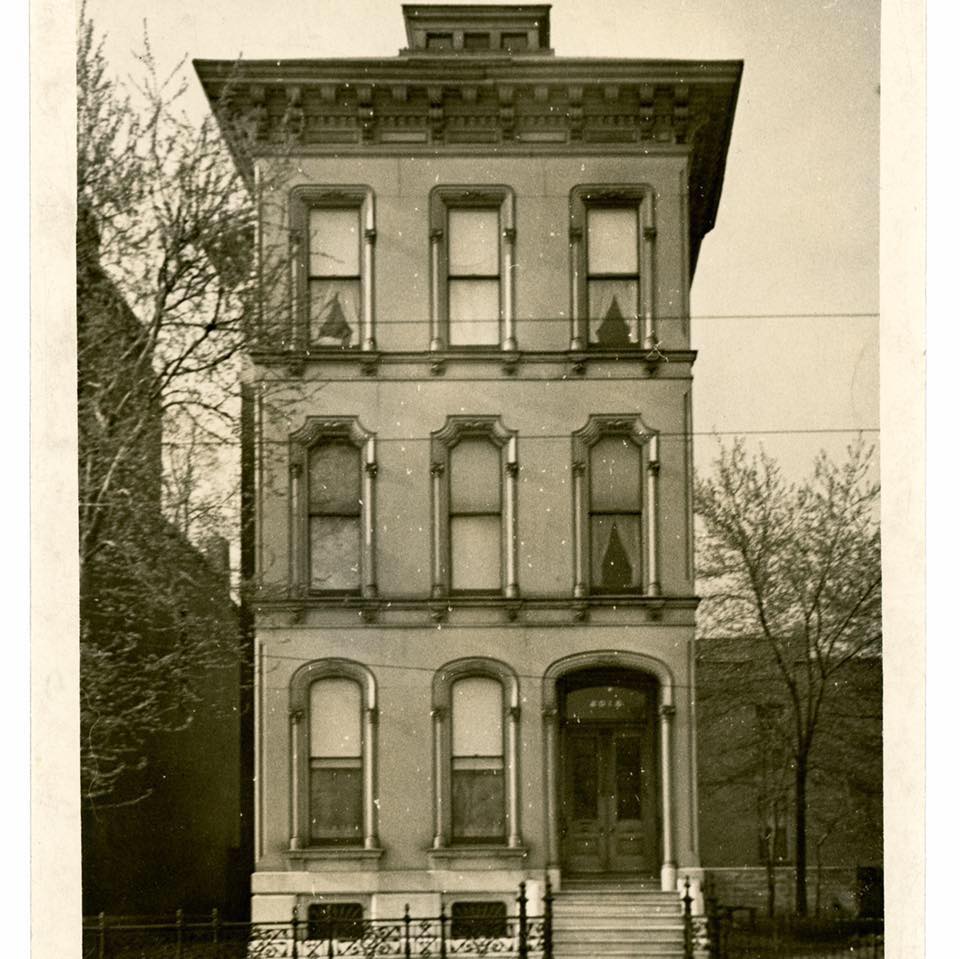The Blair-Desloge mansion at 5 Benton Place in Lafayette Square is among the oldest houses on any surviving private street in St. Louis. Montgomery Blair had five houses built in Lafayette Square by prominent architect George I. Barnett, beginning in 1866, including this mansion which was built in 1867 in the Second Empire style, as one of the early examples of its kind. Blair had owned land in the area since the mid 1850s, while he was fighting the case for the freedom of Dred Scott in the Supreme Court. He later became the postmaster general under Abraham Lincoln during the Civil War, and after his term ended, he moved back to St. Louis. He had Benton Place laid out by Julius Pitzman, who designed the street with a large oval shaped boulevard in the middle that was lined with trees. Blair later moved back to Baltimore area and sold his properties to different prominent St. Louisans. 5 Benton Place was sold to Cynthia Desloge, who was a member of the prominent Desloge family, who had moved to Missouri from France in 1823, and to St. Louis in 1861. The family also owned the railroad lines passing through southern Missouri, including the town which is also named after them. The mansion appears to have survived the 1896 tornado that destroyed many houses in Lafayette Square without significant damage. In the 1930s, many mansions in Lafayette Square were turned into rooming houses when many people could no longer afford to maintain them, and as the wealthy residents of St. Louis continued to move west, which by 1930 meant at the city limits or in Clayton or University City. The neighborhood was in severe decline by the 1960s, but local preservationists saw its value and restored many of the historic mansions. As a result of their efforts, Lafayette Square is one of the most well preserved neighborhoods in St. Louis today, and has regained much of its desirability.
1940s photo of the mansion by William G. Swekosky
The mansion on the 1875 Compton and Dry map, labeled number 15




